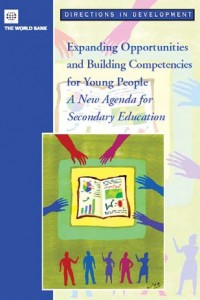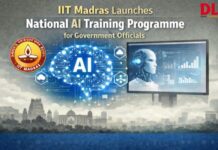Expanding Opportunities and Building Coimpetencies for Young People – A New Agenda for Secondary Education
 This report prepared by a team led by Ernesto Cuadra and Juan Manuel Moreno including other contributors under the general direction of Jean- Lovis Sarbib, Senior Vice President of the World Bank’s Human Development Network. Expanding Opportunities and Building Competencies for Young People report aims at guiding developing countries and transition economies, in policy options and decision-making for reforming their secondary education systems to meet the challenges presented by globalisation and the knowledge based economy. This report highlights that ICTs are crucial for addressing the twin challenges of expanding access, and improving the quality and relevance of secondary
This report prepared by a team led by Ernesto Cuadra and Juan Manuel Moreno including other contributors under the general direction of Jean- Lovis Sarbib, Senior Vice President of the World Bank’s Human Development Network. Expanding Opportunities and Building Competencies for Young People report aims at guiding developing countries and transition economies, in policy options and decision-making for reforming their secondary education systems to meet the challenges presented by globalisation and the knowledge based economy. This report highlights that ICTs are crucial for addressing the twin challenges of expanding access, and improving the quality and relevance of secondary
In a globalised world, the demand for quality secondary education which enthuses values, attitudes and skills in the young people is higher than ever before. The economies of today’s world increasingly need a more sophisticated work force equipped with competencies, knowledge and workplace skills which is the most crucial factor for growth and development of economy and society.
Assessing this emerging scenario, there is worldwide policy debate focusing on strategies on providing quality education to the young generation. It is being realized by policy makers that there is urgent need to increase students’ access to secondary education and at the same time improve its quality and relevance. This book delivers very important messages on attaining the level of
quality secondary Education. uality secondary education is a mission on its own. The report argues that The United Nations Millenium Development Goals (MDGs) for education can only be achieved through systematic policies for post compulsory secondary education. It also mentions thatsecondary education has a special role to play in HIV/AIDS prevention in affected countries(chapter1 and2). Secondary education faces twin challenges that is expansion of its equitable access and improving quality to ensure relevance. It has to be kept in observation that the quality of secondary education is not compromised while expanding its access (chapter 3 and 4). Advanced work patterns are being adopted which are leading to radically new approaches in the way curricular knowledge is selected, organized and sequenced. This is important development in the context of knowledge society. Information and
Communication Technologies(ICTs) offers new avenues for expanding access to quality secondary education and can be used as levers for curriculum reform and innovation (chapter 5). here is a focus on response from the perspective of the teaching profession. It also discusses the potential perils and promises linked to the use of ICTs in education in secondary schools (chapter 6). It is also important to develop multiple sources of funding enhancing measures which is significant for to expand access and improve the quality of secondary education. Public-Private partnership can make very important contribution in making mass secondary education affordable. But this effort need to be complemented by substantial contributions from bilateral and multilateral partners(chapter 7). To produce good educational outcomes it is required to reform the traditional of state Intervention and public management strategies in order to promote delivery of high-quality secondary education services (chapter 8). The epilogue titled Rethinking Secondary Education suggests that there is a need for redical transformation of policies and of institutional practices to the task of expanding access and improving the
quality of secondary education. This book sets forth evidence based policy options for decision makers. Data collection and use of quantitative method is impressive and enhances the value of the work.
























